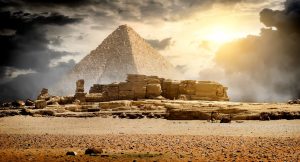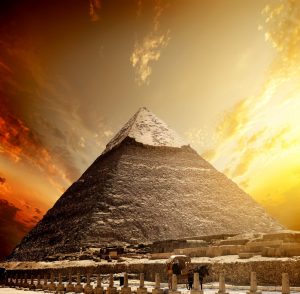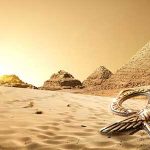Due for release in June 2017, The Mummy stars Tom Cruise, Russell Crowe and Sofia Boutella.
In the film, Princess Ahmanet (Boutella) was burned alive beneath the sands of Egypt over 2,000 ago, as punishment for killing her father. When her tomb is rediscovered and opened in modern times, she remerges as a malevolent sprit that has grown in intensity and terror over the millennia. The whole of humanity is at risk.
There is no doubt that the film will re-ignite the mysteries that surround Egypt and the tombs of the pharaohs. Because, even though it is a highly-researched era of history, we are still missing many of the pieces that could potentially unlock various mysteries.

5,000 years after the ancient Egyptians walked the earth, we are still discovering their secrets and unravelling their mysteries.
So, what are these mysteries? And will we ever unravel them?
Mystery 1 – What did ancient Egyptians look like?
With all the mummies, statues and engravings left behind by the ancient Egyptians, you would assume that we understood what they looked like and what they were.
But some Egyptologists believe that the ‘Hollywood look’ as they call it, has changed our perception. Egyptians were a diverse range of people and they did not have a propensity to mark out different skin colours as the films did – white people in powerful roles and black servants. They were a race of ‘all colours’ – those who spoke the language, worshipped the king and the proper gods were considered Egyptians.
Mystery 2 – How were the pyramids built?
They dominate the landscape and are the monuments that everyone wants to see, but the mystery of how the pyramids were built in the days before cranes and diggers is yet to be unravelled.
Just how did a society with no known modern construction methods manage to move giant blocks of rock, let alone pile them on top of one another to create a 3D triangle?
We are some way to finding the answers. Egyptian desert sand when wet has half the friction and thus, believe experts, a smaller team of men would be needed to pull a sledge on wet sand.
Other than that, engineers and Egyptologists are still working out how this ancient race of peoples built such complex structures. Maybe we will never know…
Mystery 3 – How did King Tutankhamun die?
His tomb was discovered in 1922 but the details of his life and death at 19 years of age remain somewhat of a mystery.
He was buried in haste, giving the idea that his death was unexpected. This led to theories that he died because of an accident, such as an overturned chariot. History courses online and in the classroom could only hint at what was really the answer.
Modern scanning and DNA profiling have led to some interesting discoveries. King Tutankhamun had a ‘club foot’ and a curve of the spine, which Egyptologists believe would have made it an almost physical impossibility for him to control a chariot with two charging horses.

Just how did a society with no known modern construction methods manage to move giant blocks of rock, let alone pile them on top of one another to create a 3D triangle?
What they did discover was a DNA profile that was very similar to that of other family members, not a startling revelation on its own but when you consider that he was a product of incest, you can immediately see how very little we understand of this Egyptian royal family.
Mystery 4 – What is hidden in the Great Pyramid of Khufu?
We believe that members of the family were buried with treasure and food to help them on their way into the afterlife and so discovering long-lost treasures is not uncommon.
But the largest pyramid at Giza has yet to give up its secrets. A scan of the building in 2015 has given rise to the discovery of ‘thermal anomalies’, suggesting that there is something within the structure.
As yet, there are no conclusions. Maybe there is another tomb…
Are you a history detective?
5,000 years after the ancient Egyptians walked the earth, we are still discovering their secrets and unravelling their mysteries.
If you enjoy unravelling mysteries of the past and examining ancient peoples of the past, then History courses online are perfect for you.
They allow you the opportunity to study what we know or think we know about all kinds of peoples, civilisations and happenings of the past. It is a chance to examine the evidence and draw conclusions.
The study of history allows us to chart progress but also to look forward, to examine how we reached where we are today and how the future could be shaped by the happenings of the past.
There is no doubt that the film ‘The Mummy’ will once again ignite interest in the tombs of ancient Egypt and no doubt the superstition that those that disturb the tombs of the great kings and queens bring bad luck on themselves…








